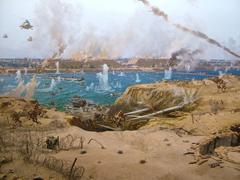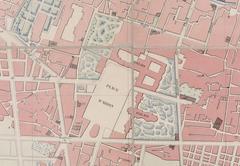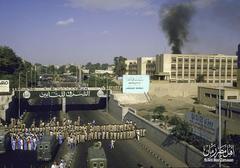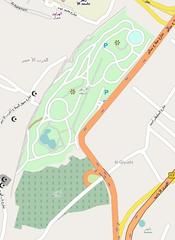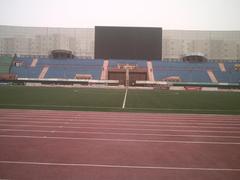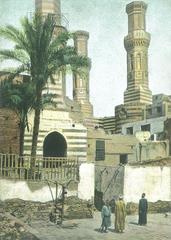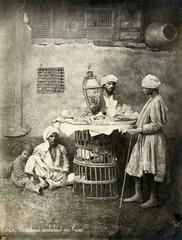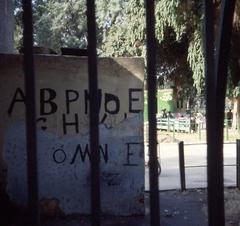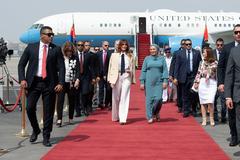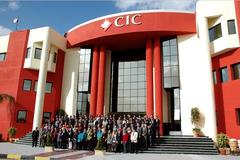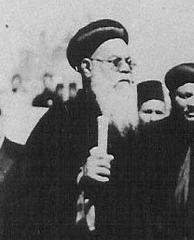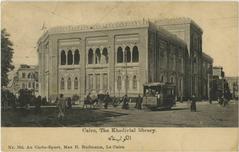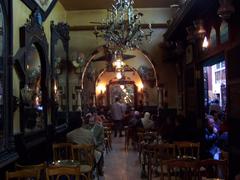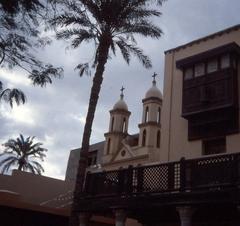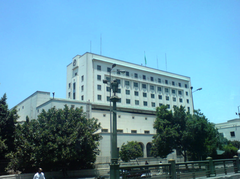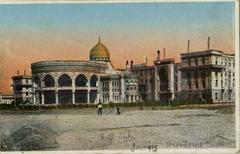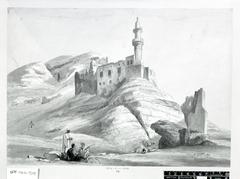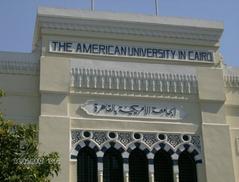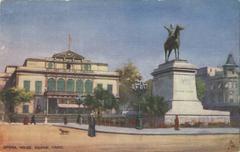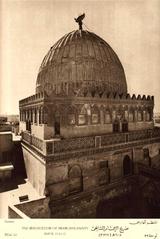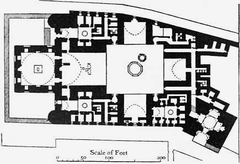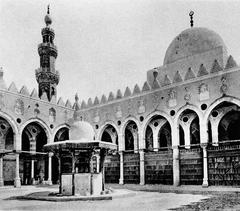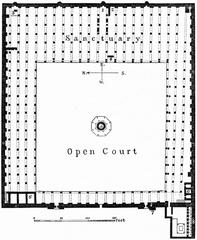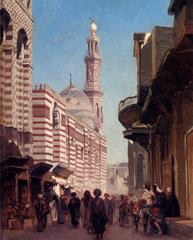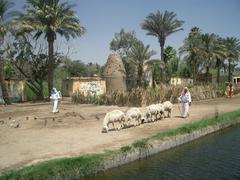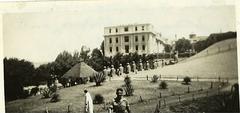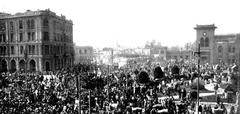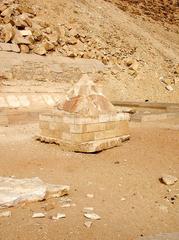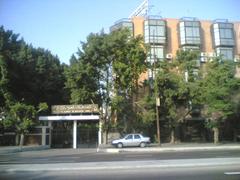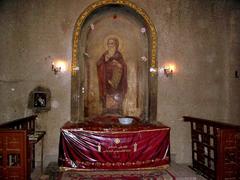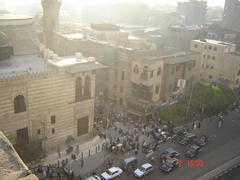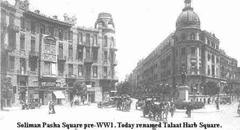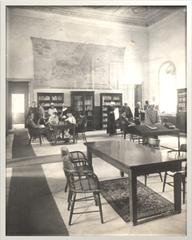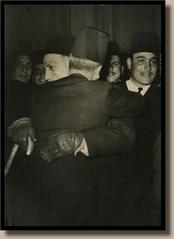National Archives of Egypt: Visiting Hours, Tickets, and Historical Significance in Cairo
Date: 14/06/2025
Introduction
The National Archives of Egypt (Dar al-Wathaiq al-Qawmiyya) is a cornerstone of the nation’s historical and cultural preservation, situated along the scenic Nile Corniche in Cairo’s Ramlet Boulaq district. Established in the early 19th century under the reign of Mohammed Ali Pasha, it is one of the oldest archival institutions in the world. The archives safeguard invaluable documents, manuscripts, and artifacts that chronicle Egypt’s evolution from the Abbasid and Fatimid eras through the Ottoman period and into modern statehood. While primarily serving as a research facility, the National Archives also plays an active role in public education through special exhibitions and cultural outreach, making it an essential destination for researchers and history enthusiasts alike (National Archives of Egypt Official Website; UNESCO; U.S. Department of State).
Table of Contents
- Introduction
- Historical Overview
- Visitor Information
- Preservation and Challenges
- Cultural and Educational Outreach
- Role in National Identity
- Frequently Asked Questions (FAQ)
- Conclusion and Final Tips
- References
Historical Overview
Origins and Early Development
Founded in 1828 as the Daftarkhana (“House of Documentation”) within the Cairo Citadel, the National Archives of Egypt is among the world’s first national archival institutions. Mohammed Ali Pasha’s vision was to centralize Egypt’s administrative records, ensuring systematic collection and preservation for generations to come. The archives’ early leadership, including Ragheb Effendi, established internal regulations that set the foundation for centuries of documentation.
Growth and Political Changes
Throughout the 19th and 20th centuries, the archives expanded to include documents spanning the Abbasid, Fatimid, Ayyubid, Mameluk, and Ottoman periods, as well as the Mohammed Ali dynasty and contemporary Egyptian governments. The archive’s collections reflect Egypt’s unique position as a crossroads of civilizations, with documents in Arabic, Turkish, English, French, Italian, German, and Amharic. The 1952 revolution and subsequent Law No. 356 of 1954 broadened the institution’s mandate, ensuring comprehensive coverage of Egypt’s historical documentation.
Institutional Reforms and Modernization
Originally located in the Citadel and later Abdeen Palace, the archive found its permanent home in a modern building on the Nile Corniche in 1990. Presidential Decree No. 176 (1993) granted autonomy and a dedicated budget, ushering in significant modernization. The facility now boasts expansive reading and research halls, modern conservation systems, and digital cataloging for increased accessibility.
Scope and Significance of the Collections
The National Archives holds over 57,000 rare manuscripts, ancient papyri dating to the early Islamic period, extensive collections of medieval Arabic coins, and private papers from prominent intellectuals. Collections cover governmental, legal, religious, and private spheres, providing an unparalleled resource for understanding Egypt’s political, social, and cultural evolution (National Archives of Egypt Official Website).
The National Archives in Global Context
As one of the earliest such institutions worldwide, the National Archives of Egypt predates many Western counterparts. Its multilingual collections and breadth of historical coverage underscore Egypt’s enduring influence in the region and beyond.
Visitor Information
Location and Access
The National Archives is located at the National Library complex, Corniche El-Nil, Ramlet Boulaq, Cairo (Postal Code 11638, PO Box 8 - Sabttiya). The site is accessible via taxi, ride-hailing apps (Uber, Careem), and public transportation. The nearest metro stations are Sadat and Nasser; from there, a short taxi ride or walk leads to the archives (U.S. Department of State).
Visiting Hours
- Sunday to Thursday: 9:00 AM – 3:00 or 4:00 PM (confirm ahead)
- Friday & Saturday: Closed
- Public Holidays: Closed
- Note: Hours may change during Ramadan or for special events—always verify before visiting (U.S. Department of State).
Ticketing and Entry Requirements
- General Admission: There are no standard tickets for general visitors; access is primarily for accredited researchers and scholars.
- Research Access: Researchers must secure an academic sponsor in Egypt, submit an application with a research proposal and credentials, and allow several weeks for security clearance.
- Group or Educational Visits: Possible by prior arrangement; contact the archives in advance for guided tours or special group access.
- Fees: Access is free for approved researchers and students; fees may apply for photocopying, digital reproduction, or special exhibitions.
Accessibility
The modern facility features ramps and elevators in primary areas, but not all sections are fully accessible for visitors with mobility challenges. Contact the archives beforehand to discuss accommodations (Ministry of Tourism and Antiquities).
Guided Tours and Exhibitions
While individual tourist visits are restricted, the archives occasionally host special exhibitions and public events. Guided tours for educational or cultural groups can be scheduled in advance. The adjacent National Library and Museum of Islamic Art offer public displays and exhibitions related to Egypt’s documentary heritage.
Facilities and Services
- Reading Rooms: Spacious and well-equipped for scholarly work; Wi-Fi availability should be confirmed in advance.
- Language Support: Most documents are in Arabic; some staff speak English or French. Non-Arabic speakers may benefit from a translator.
- Amenities: Restrooms and a reception area; no on-site café, but many dining options are nearby.
Tips for Visitors
- Begin research affiliation and application procedures several months ahead.
- Bring all necessary identification and approval documents.
- Confirm appointments and visiting hours before travel.
- Dress conservatively and professionally.
- Prepare for security screenings and restricted photography.
- Carry cash for any fees, as card payment options may be limited.
- Handle all archival materials with care; gloves may be required.
Nearby Attractions
- Egyptian Museum (approx. 2 km away)
- Museum of Islamic Art
- Cairo Citadel
- Khan El Khalili Bazaar
- Bab Al Khalq district
- Nile Corniche promenade
Combine your visit to the archives with these key sites for a comprehensive Cairo cultural experience.
Preservation and Challenges
The National Archives has faced significant challenges, including a 2014 bombing near the Police Headquarters that damaged parts of the facility. Restoration and digitization programs, often in partnership with UNESCO and other organizations, have strengthened resilience and ensured long-term preservation of Egypt’s documentary heritage (UNESCO).
Cultural and Educational Outreach
Even though the archives themselves are not generally open to the public, educational outreach takes place through exhibitions, publications, and regional training programs for archivists and conservators. The adjacent National Library and Museum of Islamic Art host regular displays to foster public appreciation of Egypt’s manuscript and documentary legacy.
Role in National Identity
As the guardian of Egypt’s collective memory, the National Archives preserves the nation’s identity through centuries of records in multiple languages and from various eras. This invaluable institution continues to connect Egyptians and international scholars to the country’s enduring narrative and global cultural role.
Frequently Asked Questions (FAQ)
Q: What are the National Archives of Egypt opening hours?
A: Sunday to Thursday, 9:00 AM to 3:00 or 4:00 PM; closed on Fridays, Saturdays, and public holidays.
Q: Can tourists visit the National Archives without academic affiliation?
A: No, general public access is not permitted. Researchers must arrange visits in advance and meet entry requirements.
Q: Are there tickets for the National Archives of Egypt?
A: No general admission tickets; access is by prior arrangement for approved researchers and groups.
Q: Is the building accessible for people with disabilities?
A: Some main areas are accessible, but full accessibility is not guaranteed. Contact the archives ahead for specific needs.
Q: Are photography and photocopying allowed?
A: Only with prior permission; fees may apply and restrictions are enforced.
Conclusion and Final Tips
The National Archives of Egypt stands as a guardian of one of the world’s oldest and richest documentary heritages. While access is limited to protect its priceless collections, the archives’ influence extends through public exhibitions, educational outreach, and collaboration with adjacent institutions. Visitors to Cairo should consider exploring the Museum of Islamic Art and other nearby sites to experience Egypt’s enduring historical legacy. Proper planning—securing affiliations, understanding visiting hours, and respecting archival protocols—will ensure a rewarding and insightful visit. As digitization and modernization efforts continue, the National Archives will play a growing role in making Egypt’s heritage accessible to future generations.
References
- National Archives of Egypt Official Website
- UNESCO: Promoting Egypt’s Cultural Heritage and National Capacities
- U.S. Department of State: Egypt Archives Information
- Ministry of Tourism and Antiquities, Egypt
- HikersBay: Cairo Tourist Information
- Egypt United Tours: Is Cairo Safe for Tourists?
Images and maps are for illustration; please use actual photographs with appropriate alt tags such as “National Archives of Egypt facade” and “Map of National Archives and Nearby Attractions.”

